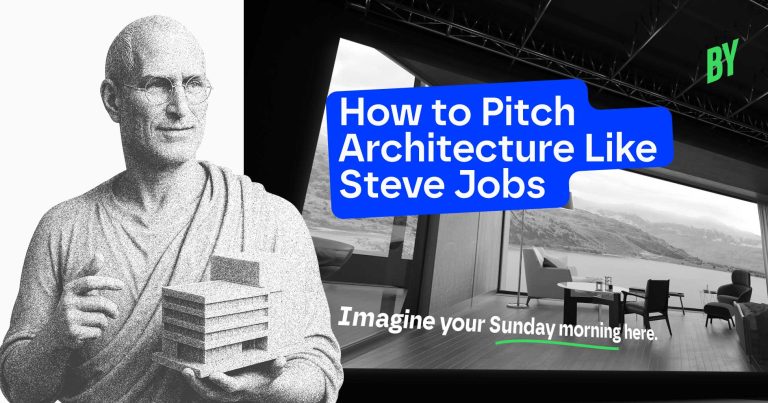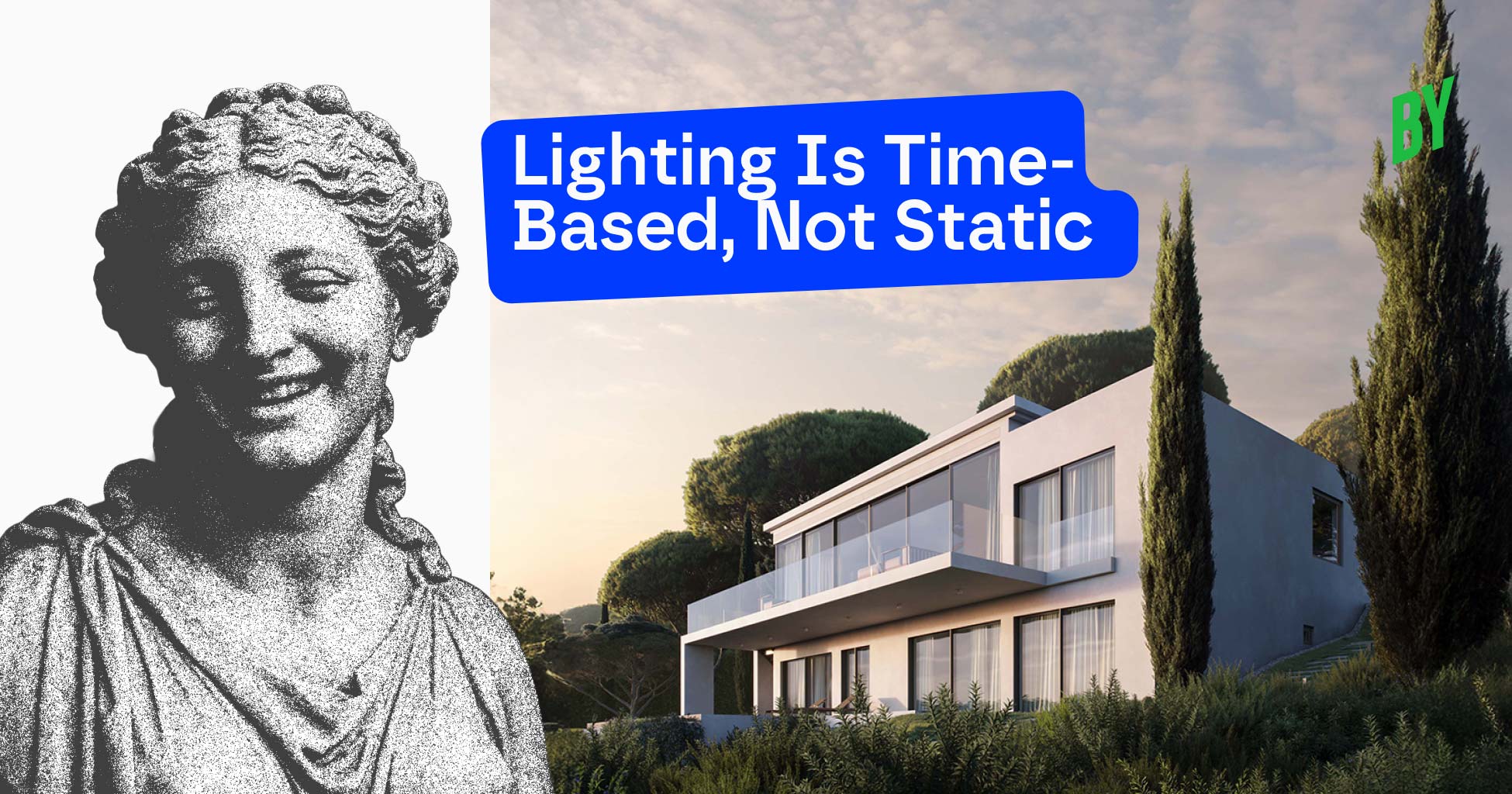What Time Has to Do With Emotion
Every time of day carries a different emotional tone:
- Morning: Soft, angled light; evokes freshness and quiet possibility. Think dew, muted warmth, and gentle starts.
- Noon: Clear and direct; feels neutral, exposed, sometimes sterile. It reveals everything, but says little emotionally.
- Golden Hour: Rich, low-angle light; suggests warmth, intimacy, and nostalgia. It’s the light of memory and softness.
- Evening/Night: Cozy or dramatic; blends shadow and glow to create tension or comfort. Think intimacy, contrast, and mystery.
These shifts in tone happen not just in reality—but in perception. When viewers look at a render, their brain ties the lighting to a lived emotional experience. That’s where the trust begins.
Lighting is your emotional script. Time of day is your scene direction.
Static Lighting Creates Static Emotion
When renders rely on generic HDRIs, always-on artificial lights, or reused scene presets, they lose their soul.
Lighting becomes a checkbox.
The result? A technically correct but emotionally empty image. One that feels like a catalog page—not a lived-in space.
The danger is this: even when everything is right on paper, the image can still fall flat. And most clients won’t say, “the lighting feels off.” They’ll just say, “Can we try a different version?”
A Better Way: Light With Intention
Instead of flattening the space with top-down lighting, think in angles, contrast, and warmth.
One approach we use:
- Daylight at 40–90 degrees
- A 60:40 ratio of light to shadow
- Low camera POV for intimacy
- Accent lights instead of fully lit scenes
These technical details add up to a scene that feels atmospheric, grounded, and real. Because the goal isn’t to make everything visible—it’s to make everything believable.
We’re not lighting to show the render. We’re lighting to show the mood of the design.
When Behavior and Light Don’t Match
Designers often light scenes based on visibility, not story.
Example: A client asks for a community area render at noon. Technically accurate. Practically unused.
Instead, we suggested golden hour. We added small cues—residents chatting, morning routines. The space became emotionally believable.
Lighting should support how a space is used, not just how it’s built. Ask: When do people experience this space? And more importantly: What do they feel when they do?
A Room, Lit Four Ways
We once rendered the same living room at four times of day:
- Early morning
- Noon
- Golden hour
- Twilight
Each told a different story. Each changed how the viewer felt.
Morning light brought freshness. Golden hour added warmth. Noon felt neutral and exposed. Twilight turned the same space into something cinematic.
Because people don’t use spaces in a single static state. Your render shouldn’t either.
Clients don’t just want to see how a space looks. They want to know how it lives.
Clients Feel Real Light
Even when they can’t name it.
Natural lighting creates texture, depth, and authenticity. It feels honest.
Compare that to preset HDRIs or filter-heavy lighting—they often look polished but feel sterile.
The difference? Believability.
When a client pauses and imagines themselves in the space, the render has done its job. They don’t ask, “Is the wall color right?” They say, “This feels like something I’d want to live in.”
Don’t Overdo Artificial Lighting
Artificial lights aren’t the enemy. Overuse is.
We always ask:
- Why is this light on?
- Where is it placed?
- What emotion is it adding?
If you can’t answer those, remove it. Because light with no purpose creates clutter, not clarity.
Just like we don’t add furniture without reason, we shouldn’t add light sources without purpose. One misplaced glow can turn intimacy into confusion. Worse—it can make a real space feel fake.
The Magic of Twilight
Twilight is often overlooked. But it’s emotionally potent.
With warm-to-cool gradients, purples and blues, and dramatic silhouettes, twilight adds cinematic mood.
It doesn’t just light a space. It lights a feeling.
We once created a render of a cliffside villa where golden hour didn’t do justice to the setting. But at twilight—with the sky lit in fading violet and the lights inside casting a soft glow—the space felt enchanted.
That’s the power of time-based lighting. It moves the render from visual to visceral.
Use twilight when you want the image to hover between realism and dream.
Lighting in Commercial vs Residential Renders
For commercial projects, designers often default to full artificial lighting to show visibility. But this creates flat, showroom-style visuals.
Instead, we advise:
- Blend daylight with artificial to mimic real usage
- Highlight focal zones (entrances, signage, shared spaces)
- Avoid overexposure that drains material texture
For residential:
- Let natural light dominate
- Use accent lamps or window glow to suggest presence
- Focus on mood transitions across the day
In both cases, lighting shouldn’t just show function—it should elevate feeling.
Light That Tells Time (And Story)
Lighting isn’t just about showing the design. It’s about shaping the emotional experience of the space.
Light tells time. And time carries feeling.
So don’t just light a scene. Light a moment.
If you want a render that feels like home, holiday, or a memory— let lighting do the talking.




